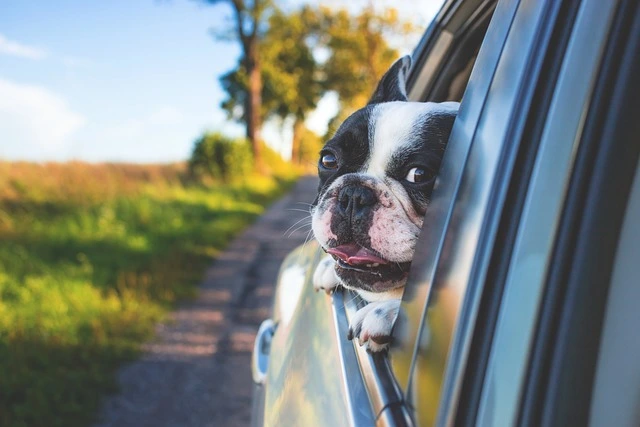Traveling with pets can be a fulfilling adventure, creating cherished memories and bonding moments for the whole family. However, for many pet owners, the prospect of car travel with their furry companions can also evoke feelings of apprehension and concern. Pets, like humans, can experience anxiety and discomfort during car journeys, which can detract from the overall enjoyment of the trip.
Recognizing the importance of ensuring the well-being of pets during car travel, pet owners are increasingly seeking guidance on how to keep their beloved animals calm and content throughout the journey. Whether embarking on a weekend getaway or a cross-country road trip, pet owners strive to provide their furry friends with a safe and comfortable travel experience.
This article serves as a comprehensive guide for pet owners navigating the challenges of car travel with their four-legged companions. From pre-trip preparations to on-the-road strategies and post-travel care, we’ll explore practical tips and expert advice to help you and your pet embark on a stress-free and enjoyable journey together.
Before hitting the road, it’s essential to lay the groundwork for a successful trip by addressing your pet’s specific needs and ensuring they are adequately prepared for the journey ahead. We’ll discuss the importance of veterinary check-ups, pet identification, and gradual acclimatization to the car environment to help minimize stress and anxiety.
During the journey, we’ll delve into strategies for keeping your pet calm and comfortable while on the road. From securing restraints and providing familiar comforts to taking regular breaks and offering distractions, we’ll provide actionable tips to help alleviate your pet’s anxiety and ensure a smooth travel experience for everyone.
After the journey, we’ll guide you through the post-travel transition, offering advice on reintroducing routines, monitoring your pet’s behavior, and providing reassurance to help them readjust to their home environment.
By following the advice outlined in this article, you can embark on your next car journey with confidence, knowing that you’ve taken the necessary steps to prioritize the well-being and happiness of your cherished pet.
Pre-Trip Preparation:
Before embarking on a car journey with your pets, it’s crucial to make adequate preparations to ensure a smooth and stress-free experience for everyone involved. Here are some steps to take before hitting the road:
- Visit the Veterinarian: Schedule a check-up with your veterinarian to ensure your pet is healthy and up-to-date on vaccinations. Your vet can also provide advice on motion sickness and anxiety management.
- Pet Identification: Ensure your pet wears a collar with an ID tag containing your contact information. Additionally, consider microchipping your pet for added security in case they get lost during the trip.
- Acclimate Your Pet: Gradually acclimate your pet to the car environment by taking short drives around the neighborhood. This helps reduce anxiety and builds positive associations with car travel.
- Pack Essentials: Pack a travel kit for your pet, including food, water, bowls, a leash, waste bags, medications, and comfort items such as blankets or toys. Familiar scents can help soothe anxious pets during the journey.
During the Journey:
Once you’re on the road, it’s essential to employ strategies to keep your pet calm and comfortable throughout the journey. Here are some tips for car travel with pets:
- Secure Restraints: Ensure your pet is safely restrained in the car using a pet seatbelt, crate, or pet barrier. This prevents them from roaming freely and causing distractions while you’re driving.
- Provide Comfort: Create a cozy and familiar space for your pet in the car by placing their bed or blanket in a designated area. Familiar scents and comfortable surroundings can help alleviate stress during the journey.
- Take Breaks: Make regular stops during long journeys to allow your pet to stretch their legs, use the bathroom, and hydrate. Use designated pet-friendly rest areas or parks for breaks.
- Offer Distractions: Provide your pet with toys or treats to keep them occupied during the journey. Interactive toys or puzzle feeders can help divert their attention and reduce anxiety.
After the Journey:
Upon reaching your destination or returning home, it’s essential to attend to your pet’s needs and ensure a smooth transition. Here are some post-travel tips:
- Reintroduce Routine: Resume your pet’s regular feeding and exercise routine to help them readjust to their environment. Maintain consistency to minimize stress.
- Monitor Behavior: Keep an eye on your pet’s behavior following the journey. Look for signs of anxiety or discomfort, and consult your veterinarian if you have any concerns.
- Offer Reassurance: Spend quality time with your pet to reassure them and strengthen your bond. Positive interactions can help alleviate any lingering stress from the journey.
Conclusion:
Traveling with pets can be a rewarding experience, but it requires careful planning and consideration for their well-being. By following the tips outlined in this article, you can ensure a safe and enjoyable car journey for both your pets and your family. Remember to prioritize their comfort and security every step of the way.
Frequently Asked Questions
- How can I help my pet overcome car anxiety?
- Gradual acclimatization, positive reinforcement, and creating a comfortable environment in the car can help ease car anxiety in pets. Additionally, consulting with a veterinarian for advice and possible medication options may be beneficial.
- Is it safe to leave my pet alone in the car during short stops?
- It’s generally not safe to leave pets unattended in a car, even for short stops, as temperatures inside a parked car can quickly become dangerously hot or cold, posing risks to the pet’s health.
- What should I do if my pet experiences motion sickness during car travel?
- Offering small, bland meals before travel, keeping the car well-ventilated, and taking breaks to allow your pet to recover can help alleviate motion sickness. Consulting with a veterinarian for suitable medications or supplements may also be advisable.
- Are there any specific breeds that are more prone to car anxiety?
- While individual temperament varies, some breeds, such as those with a predisposition to anxiety or motion sickness, may be more prone to car anxiety. However, any pet can develop anxiety during car travel.
- Can I give my pet medication to calm them during car journeys?
- Only administer medication to your pet under the guidance of a veterinarian. Some pets may benefit from prescribed anti-anxiety medications or supplements, but dosage and suitability should be determined by a professional.
- How can I prevent my pet from becoming car sick?
- Avoid feeding your pet immediately before travel, provide good ventilation in the car, and consider shortening travel distances or using anti-nausea medications or supplements as advised by your veterinarian.
- What should I do if my pet refuses to get into the car?
- Use positive reinforcement techniques, such as treats and praise, to gradually acclimate your pet to the car. Start with short, positive experiences and gradually increase the duration of car rides.
- Are there any training techniques to help my pet become more comfortable with car travel?
- Desensitization training, involving gradually exposing your pet to car-related stimuli in a positive and controlled manner, can help them become more comfortable with car travel over time.
- Should I feed my pet before a car journey?
- It’s generally best to avoid feeding your pet a large meal immediately before travel to reduce the risk of motion sickness. However, offering a small, light meal a few hours before travel can help prevent hunger-induced anxiety.
- What are the signs of stress or anxiety in pets during car travel?
- Signs of stress or anxiety in pets during car travel may include panting, pacing, drooling, whining, trembling, vomiting, or attempting to escape from the car.
- Is it safe to allow my pet to travel in the front seat of the car?
- It’s generally safer for pets to travel in the back seat or cargo area of the car, secured with a pet seatbelt, crate, or barrier, to minimize the risk of injury in the event of an accident.
- How can I make long car journeys more comfortable for my pet?
- Provide a comfortable and familiar environment for your pet in the car, take regular breaks for exercise and bathroom breaks, and offer distractions such as toys or treats to keep them occupied.
- Are there any natural remedies to help calm my pet during car travel?
- Some natural remedies, such as pheromone diffusers, herbal supplements, or calming sprays, may help reduce stress and anxiety in pets during car travel. Consult with your veterinarian for recommendations.
- What should I do if my pet becomes agitated or restless during the journey?
- Remain calm and provide reassurance to your pet. Offer distractions such as toys or treats, adjust the environment to address any discomfort, and consider taking a break to allow your pet to calm down.
- Can I use pheromone products to reduce my pet’s anxiety during car travel?
- Pheromone products, such as diffusers or sprays, can help calm pets by mimicking natural calming signals. These products may be beneficial for reducing anxiety during car travel, but individual responses may vary.
- How long does it typically take for pets to adjust to car travel?
- The time it takes for pets to adjust to car travel varies depending on individual temperament and previous experiences. With patience, positive reinforcement, and gradual exposure, most pets can learn to tolerate and even enjoy car journeys over time.

Juan López, a pet enthusiast since youth, shares his expertise and love for animals on his blog. With practical tips and profound insights, he guides readers toward a happier life alongside their furry companions.




